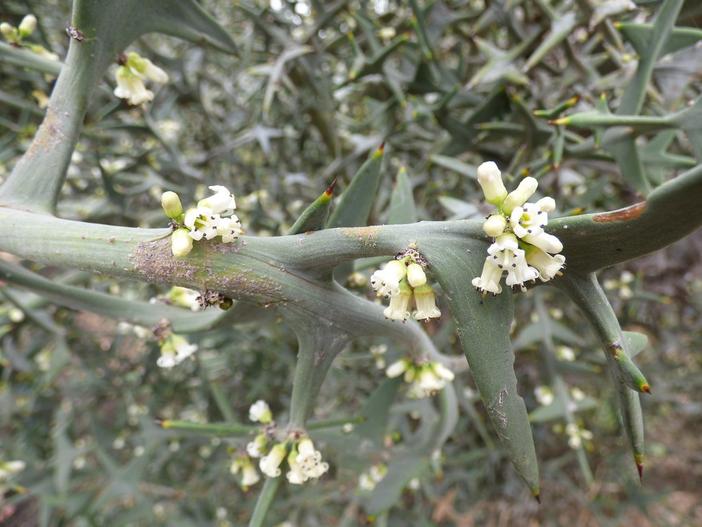Anchor Plant
(Colletia paradoxa)
Anchor Plant (Colletia paradoxa)
/
/

Forest and Kim Starr
CC BY 2.0
Image By:
Forest and Kim Starr
Recorded By:
Copyright:
CC BY 2.0
Copyright Notice:
Photo by: Forest and Kim Starr | License Type: CC BY 2.0 | License URL: https://creativecommons.org/licenses/by/2.0/ | Uploader: Starr Environmental | Publisher: Flickr
























































Estimated Native Range
Summary
Colletia paradoxa, commonly known as Anchor Plant, is a deciduous shrub native to the dry coastal areas and rocky outcrops of Southern South America, particularly in Argentina and Uruguay. It typically grows to a height and width of 0.5-2 feet (0.2-0.6 meters), forming a compact and thorny structure. The Anchor Plant is notable for its unique appearance, with flattened, bluish-green photosynthetic stems that serve as leaves, and small, fragrant white flowers that bloom in the summer and fall. The flowers are not particularly showy but are of interest due to their unusual structure and fragrance.
The Anchor Plant is valued for its drought tolerance and architectural form, making it a distinctive choice for xeriscaping, rock gardens, and as a conversation piece in water-wise landscapes. It is also used as a barrier plant because of its thorny stems. In cultivation, it requires full sun exposure and thrives in well-drained soils, tolerating poor, rocky substrates. It is a low-maintenance plant that needs minimal watering once established. While generally disease-free, it can be susceptible to root rot if overwatered or planted in poorly drained soils.CC BY-SA 4.0
The Anchor Plant is valued for its drought tolerance and architectural form, making it a distinctive choice for xeriscaping, rock gardens, and as a conversation piece in water-wise landscapes. It is also used as a barrier plant because of its thorny stems. In cultivation, it requires full sun exposure and thrives in well-drained soils, tolerating poor, rocky substrates. It is a low-maintenance plant that needs minimal watering once established. While generally disease-free, it can be susceptible to root rot if overwatered or planted in poorly drained soils.CC BY-SA 4.0
Plant Description
- Plant Type: Shrub
- Height: 0.5-1.5 feet
- Width: 0.5-1.5 feet
- Growth Rate: Slow
- Flower Color: White
- Flowering Season: Summer, Fall
- Leaf Retention: Deciduous
Growth Requirements
- Sun: Full Sun
- Water: Low
- Drainage: Fast
Common Uses
Bank Stabilization, Fragrant, Salt Tolerant
Natural Habitat
Dry coastal areas and rocky outcrops of Southern South America
Other Names
Common Names: Cruzeiro, Cura-Manoel, Curo Curro, Quina Do Campo, Colletia
Scientific Names: , Colletia paradoxa, Colletia cruciata, Colletia exserta, Colletia insidiosa, Colletia bictoensis, Colletia bictonensis, Colletia bictanensis, Condalia paradoxa,
GBIF Accepted Name: Colletia paradoxa (Spreng.) Escal.